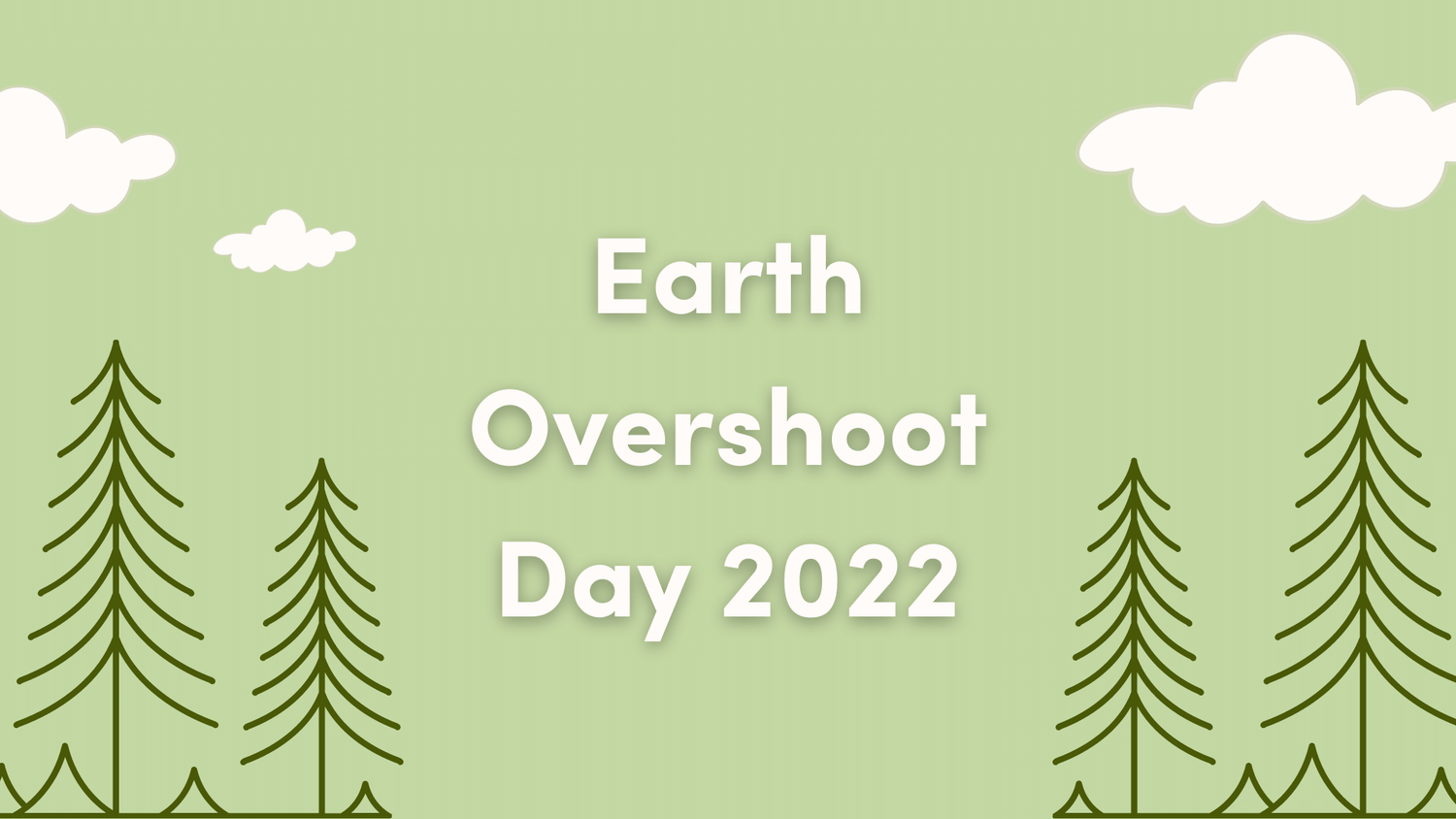Earth’s precious resources are finite. Increased demands for food production, timber, fuel, and space for agriculture and livestock over the years have all contributed to a growth in deforestation, over-farming, overfishing, and greenhouse gas emissions. These are some of the biggest culprits of our biological resources being taken for granted and used up before the earth can renew them. Earth Overshoot Day marks the day in the year when we have used up a year's worth of resources, and since 1970, this has come sooner and sooner.
This year, it falls on July 28th. Aside from a near 3 week delay in 2020 due to COVID-19 slowing the means of production, this has been a relatively steady decline from 1970, in which the day did not arrive until December 25th. Any resources we use for the remainder of the year puts us into an ecological deficit, which means we are essentially stealing resources from future generations, leading to further issues of overfishing, over-farming, and other depletion of natural resources. Currently, we are using around the equivalent resources to 1.7 earths annually.
So what can be done to halt this? It has been stated that there are five factors that are contributing to the rate the ecological deficit arrives: How we help nature thrive, how we design and manage cities, how we power ourselves, how we feed ourselves, and how many of us there are.
Planet - How we help nature thrive
As time goes on, there is an increased pressure on the ecosystems we rely on for survival, such as forests, farms, wetlands, and oceans. By protecting these and slowing the demand for biological resources, we can slow the decline in earth’s biocapacity. In fact, reforesting 350 million hectares would postpone the date by just over a week - to put this into perspective, with our current annual rate of deforestation, this would recover more than 30 years of deforestation. Pushing back the overshoot day by just six days each year would put us out of overshoot by the year 2050.
Introducing more regenerative agriculture by preserving soil quality and balancing groundwater levels can help to build healthier farmlands and improve biodiversity by protecting wildlife habitats, as well as reducing pollution and waste, decreasing the need for added chemicals, and improving the nutritional value of produce. Conservation of biodiversity through restoration of ecosystems and sustainable fishing is used to ensure genetic diversity is maintained and ocean health is supported - for example, avoiding overfishing to allow the population of marine life to remain functioning to a normal degree.
Cities - How we design and manage cities
It’s predicted that by 2050, nearly 70% of the population will be living in cities, so smart city planning is key to allowing the planet's resources to fully regenerate. Compact cities means that cars can become far less necessary and allow increased connectivity for alternative transport, such as faster and less wasteful bus, train, and tram routes, in addition to more accessibility for cycling and walking. Using urban development strategies like these could halve the carbon footprint produced by cars and delay the day of overshoot by nearly two weeks.
Energy-efficient buildings and smart street lighting are a certain step in the right direction. Only 3% of the globe’s street lights are “smart enabled” - this allows these lights to incorporate technology that can save energy whenever possible, provide electric car chargers (promoting the use of electric over fuelled cars), and also has the capability to monitor levels of noise and air pollution, as well as weather and traffic.
Energy - How we power ourselves
Around 80% of global energy is supplied from fossil fuels, which is the largest generator of carbon emissions in the UK. 60% of humanity’s entire ecological footprint is from carbon, which is why it is imperative that we replace as much coal, petrol, and gas as possible with renewable energy. Halving the global carbon footprint would suspend the overshoot day by over three whole months, making renewable energy one of our best shots at preserving earth’s natural materials.
The UK Government has committed to ending all use of coal by the year 2050, but more frequent use of alternative energy like solar and wind power should be implemented to bring the burning of fossil fuels to a halt. This is where smart city planning can really make a difference, with major emission sources being transport and housing.
Food - How we feed ourselves
There are huge amounts of environmental concerns surrounding how we produce and utilise our food, but what can be done about something we rely so heavily on for survival? Food production requires many steps, from where it begins with fertiliser and tractors to processing and transportation, therefore is heavily subsidised by fossil fuels. In addition to this, agriculture is by far our largest consumer of water.
Food waste is a huge problem in the world, contributing to so much unnecessary waste of resources such as land, water, energy, greenhouse gases, produce and livestock. Reducing the amount of food we waste by 50% would delay the overshoot deadline by nearly two weeks, and reducing meat consumption alone by 50% would delay it by nearly three weeks. This is why increasing plant-based foods in diets and lowering environmental impacts by reducing food waste and use of fossil fuels is key to a reduction in emissions.
Population - How many of us are there
One of the biggest challenges regarding population growth is based around a lack of female education. The difference between women in developing countries who are educated for twelve years as opposed to zero is four to five children to each woman due to more guidance surrounding family planning and reproductive health. Women who have been given an opportunity at education have been found to earn 25% more annually than they would’ve done otherwise and reinvest 90% of their income into their family. Not only does female education tackle birth rates and create a more resilient population, educated women are three times less likely to become HIV positive.
Population can be a difficult topic to broach in discussion of environmental issues, but it’s important to note that more education and smaller, healthier families means more women with the capability to enter into jobs that can have a positive environmental impact and a slower birth rate means a lower consumption of resources.
For more interesting articles on all things sustainability, climate change and plastic-free living head over to our blog.




Leave a comment
All comments are moderated before being published.
This site is protected by hCaptcha and the hCaptcha Privacy Policy and Terms of Service apply.